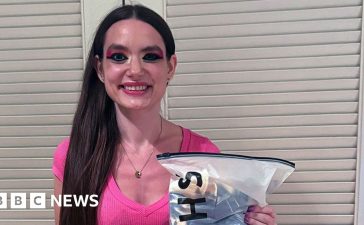Experts in sustainable biotechnology at the University of Edinburgh are exploring the concept which would see bacteria used to extract metallic compounds from lithium-ion batteries.
Once recovered and processed, valuable elements including cobalt, manganese, nickel and lithium could then feed into a new UK-based supply chain to produce more rechargeable vehicle batteries.
Similar use of micro-organisms is used in the mining industry to extract valuable metals from ores. And bacteria have been used to recover materials from electronic waste such as printed circuit boards, solar panels and from contaminated water.
However, identifying the right bacteria to effectively tackle lithium-ion batteries and applying the process to what will eventually become a glut of waste EV batteries, would solve one of the major problems linked to the shift towards green motoring.
It could also be potentially highly lucrative: as the first wave of electric vehicles’ batteries begin to reach the end of their estimated 10-year lifespan, the race is on among tech firms to find effective ways to recycle them.
Second-life EV batteries can be used for stationary energy storage in offices, and commercial settings – although domestic use has raised safety concerns – but finding a way to extract the rare metals and reusing them is regarded as a far better option, helping to avoid further mining and diverting old batteries from landfill.
In Chile, where vast amounts of the world’s lithium lies under the Atacama Desert the water-intensive process of mining for lithium has placed pressure on local people and ecosystems, and been blamed for causing natural waterways to dry up, affecting communities and wildlife.
While the nickel present in two-thirds of EV batteries is extracted from rainforests in Indonesia, also posing environmental problems there.
The Industrial Biotechnology Innovation Centre (IBioIC) is supporting the Edinburgh University project to reach industrial capacity using facilities at its FlexBio centre to refine the process in a larger bioreactor.
Meanwhile, bacteria have been selected and engineered using the Edinburgh Genome Foundry, based at the University of Edinburgh, to ensure their effectiveness at scale.
Using a fermenter, bacteria are added to battery leachate – the liquid that remains after the initial processing stages – to simulate a natural biological reaction.
During the process, the bacteria produce nano-sized particles of the metallic compounds, resulting in a sediment that can be separated and filtered out from the residual liquid.
Tests are being undertaken using material recovered from an EV battery previously used in a Nissan Leaf.
Professor Louise Horsfall is leading the research team at University of Edinburgh (Image: Contributed)
The latest research forms part of the wider Reuse and Recycling of Lithium-Ion Batteries (ReLiB) initiative, led by the University of Birmingham and funded by the Faraday Institution – the UK’s independent institute for electrochemical energy storage science, skills development, market analysis, and early-stage commercialisation.
According to the European Automobile Manufacturers’ Association (ACEA), battery electric vehicles accounted for 16.1% of total new cars between January and June 2023, making the UK one of the top ten European countries for EV sales.
While the UK Government has confirmed that 80% of new vehicle sales by 2030 must be fully electric, or another alternative, with car manufacturers facing high charges for each petrol or diesel engine above that threshold.
The growing market and declining reserves of metals used in batteries is likely to fuel a race for solutions to find fresh ways of dealing with waste batteries as they reach the end of their useful life.
While with most metals used in EV batteries currently being imported, developing alternative recycling routes could open up a more sustainable UK-based pipeline of materials.
Professor Louise Horsfall, chair of sustainable biotechnology at the University of Edinburgh who is leading the research, said: “We often read about initiatives to reduce EV battery costs and improve their performance, but as the market for green transport grows, we also need to consider what happens to the technology once it is no longer fit for use.
“This project is about using cutting-edge sustainable biotechnology to find ways of tackling that challenge and, in turn, extract some of the most valuable metals that can go back into the sector at the early stages of vehicle production.
“The work of the Edinburgh Genome Foundry to select the best performing bacteria, combined with the scale-up expertise we’ve been able to access via IBioIC, means we are heading in a positive direction towards turning the research idea into an industrial reality.”
IBioIC was established in 2014 to stimulate growth of the Industrial Biotechnology (IB) in Scotland. It is a key driver of Scotland’s National Plan for Industrial Biotechnology, which recently set a new target of £1.2 billion in associated turnover and 4,000 direct employees by 2025 for the industry in Scotland.
Dr Liz Fletcher, director of business engagement at IBioIC, said: “This project is a great example of how biotechnology can be used to make everyday products and services like cars and transport more sustainable.
“No one wants to see lithium-ion batteries ending up in landfill, so it is important to explore different ways to repurpose and recycle them.
“The method being developed here has dual value – as well as being a petrochemical-free way of dealing with waste, it could also help to ‘reshore’ the supply chain for rare metals and future battery manufacturing.”











